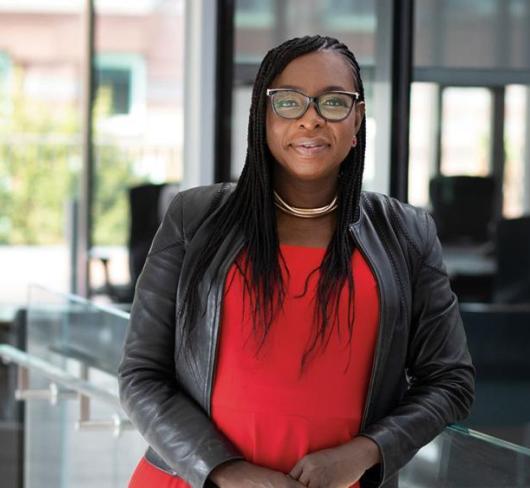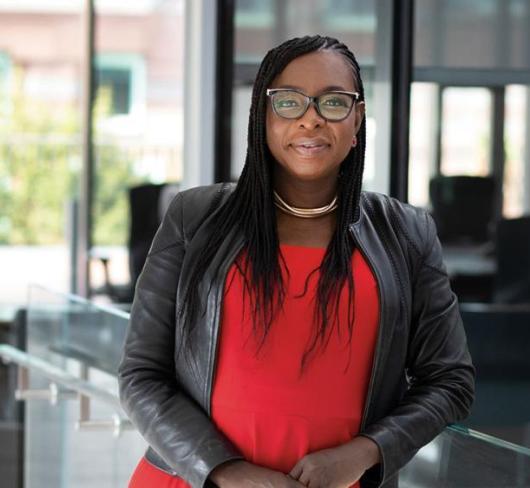Equity, Social Justice, and the Inclusive Classroom (Research for Teachers)
Commenting on his experience in trying to engage his “high-energy and at-risk” grade 6 students, a young male teacher noted:
“I tried to design an educational program with an array of cultural resources that I thought would speak to the diverse needs and interests of the students. But my attempts at being a critical and reflexive educator were having no effect on them, and so very little learning was occurring. The ways in which the students reacted to my lessons were all over the place. This continued for a few weeks, until we engaged in a community walk. I told the students that the assignment was for them to teach me about their community, about their lives, about their individual reality. And with a class of eight students, each student was able to take a turn being the tour guide and explaining significant and meaningful sites in their community.
They showed me routes they took walking to school, where they played, which areas they were not to venture into late at night. Many of the students also invited me into their homes. This experience, for me, was informative and paradigm changing. It radically altered the ways I have come to construct, direct, and articulate my pedagogy, as well as altered my perception and orientation toward teaching and learning. And from this experience, a deeper relationship was forged between myself and the students.”
While this “critical and reflexive” teacher’s use of cultural resources is germane to engaging students, it was not until he acknowledged his students as agents with knowledge and experiences shaped by their community – i.e., taking turns being tour guides – that they became responsive to his efforts. Such community lessons enable students to exercise agency, tell their individual stories, and affirm their voices. This orientation to the teaching/learning process provides opportunities for teachers to know the students, build relationships with them, engage them in their learning, and ultimately co-construct curriculum and educational programs – all of which are essential to creating educational and school environments for equity, social justice, and inclusivity. Indeed, as teacher Julie Landsman points out in the video White Teacher/Diverse Classroom (2007), teachers too often “rush over” the significance of community in the lives of students, and in doing so fail to build the necessary relationships with students and parents.
Critical to the work of educators who take a social justice and equity approach to teaching is their understanding – which they will pass on to their students – of the societal or structural roots and causes of the inequity and resultant social conditions and problems that they and their students encounter in their daily lives. Within this framework, students learn to make the connections between their privileges and/or disadvantages as related to classism, racism, sexism, homophobia, their social and cultural capital, and their social and economic situation. In this way students learn the “systemic causes of issues that shape their lives” (Ginwright, 2008) and come to understand the reasons for their struggles and social conditions.
As a grade 2 teacher concerned with equity and social justice, Allen (1997) worked with his students to identify inequities, biases, and stereotypes in their reading materials. His action research showed that his students were “developmentally capable” to question and analyze particular patterns in representations and omissions – based on race, colour, class (or poverty), and gender – in their reading materials and act upon their observations.
Based on her study of preservice elementary teachers’ emerging identities as science teachers, Moore (2008) concluded that it is at the classroom level that many felt that they had control or agency in teaching to modify curriculum and meet the needs of students. A “social justice science teacher identity,” she writes, “is essential for teaching and acting to improve science learning experiences for traditionally marginalized students, many of which (sic) are in urban schools” where they need to “have access and opportunity to learn science in empowering and transformative ways” (p. 608).
One of the challenges faced by today’s teachers is adhering to the principles of social justice, equity, and inclusivity in a schooling context that promotes standardized testing. Such tests tend to be aligned with a common curriculum which in the existing educational system privileges those students whose cultural and social capital are similar to that of the school’s, as opposed to a curriculum which caters to the diverse needs, interests, and aspirations of all students.
Teachers in schools where students are at a disadvantage – typically because of cultural and language differences – tend to teach to the test and students tend to learn by rote, in order to handle the requirements of the tests. This situation provides a very narrow learning experience for already educationally and socially disadvantaged students. Given his experience administering the EQAO test, one teacher commented: “There were so many things that were on the tests that the students had never heard of . . . Some students had never gone camping, and there were questions on different [camping] equipment” (quoted in Solomon et al., 2011, p. 85).
In sum, teachers committed to creating an equitable, social justice, and inclusive classroom cannot avoid being activists if they are to address the inequities that account for the social and educational conditions that impact their students’ educational performance and outcomes. As critical self-reflective practitioners and advocates, they must work as allies with marginalized communities to help construct culturally relevant and transformative teaching practices that provide students with hope and open opportunities, and show “the democratic possibilities of education” (Hytten, 2006).
Further Reading
Allen, A.M.A. (1997). Creating space for discussions about social justice and equity in an elementary classroom. Language Arts,74(7), 518-524.
Ayers, W., Quinn, T., & Stovall, D. (eds.) (2009). Handbook of Social Justice in Education. New York: Routledge.
Brown, k.M. (2004). Leadership for social justice and equity: Weaving a transformative framework and pedagogy. Educational Adminis- tration Quarterly, 40(1), 77-108.
Farnsworth,V. (2010). Conceptualizing iden- tity, learning, and social justice in community- based learning. Teaching andTeacher Education, 26, 1481-1489.
Ginwright, S.A. (2008). Collective radical imagination: Youth participatory action research and the art of emancipatory knowledge. In J. Cammarota & M. Fine (eds.), Revo- lutionizing Education: Youth Participatory Action Research (pp. 13-22). New York: Routledge.
Hytten, k. (2006). Education for social justice: Provocations and challenges. Educational Theory, 56(2), 221-236.
James, C.E. (2010). Life at the Intersection: Community, Class, and Schooling. Halifax: Fern- wood Publishing.
Landsman, J. (2007). White Teacher/Diverse Classroom. DVD, Stylus Publishing.
Moore, F.M. (2008). Agency, identity, and social justice education: Preservice teachers’ thoughts on becoming agents of change in ur- ban elementary science classrooms. Research in Science Education, 38, 589-610.
Solomon, R.P., Singer, J., Campbell, A., & Allen, A. (2011). Brave New Teachers: Doing Social Justice Work in Neoliberal Times.Toronto: Cana- dian Scholars’ Press.
Zajda, J., Majhanovich, S., & Rust, V. (2006). Introduction: Education and social justice. Review of Education, 52, 9-22.

